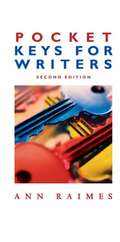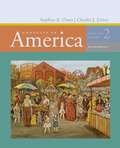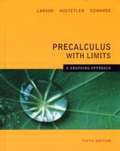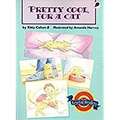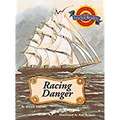- Table View
- List View
More NIMAC books are available at www.nimac.us. If you find your title in the NIMAC and not in Bookshare then please contact us to request it.
Pocket Keys for Writers (Second Edition)
by Ann RaimesPocket Keys for Writers, 2/e, is a handy reference tool that provides big writing help in a small package. This indispensable pocket-style handbook covers the essentials of the writing process, as well as research, documentation, evaluating print and electronic sources, punctuation, and mechanics. Written by a recognized leader in ESL instruction, Pocket Keys is an excellent resource for ESL writers, with a strong ESL section and ESL notes throughout the text. In short, the text delivers concise, up-to-date, and practical information in a highly accessible, reasonably priced format. The Second Edition of Pocket Keys retains the hallmark Keys organization and use of color, as well as Key Points boxes and the popular Five C's of Style. Also in this edition, material on using visuals in written projects helps students enhance the impact of their documents. Coverage of research and documentation includes using online databases and evaluating web sites.
Portrait of America, Volume 2: From Reconstruction to the Present
by Stephen B. Oates Charles J. ErricoPortrait of America is an anthology of essays written by some of America's most eminent historians. Suitable for U. S. history survey courses, the collection maintains a loose biographical focus. The essays in this secondary-source reader humanize American history by portraying it as a story of real people with whom students can easily identify. More than 20 percent of the essays in the Ninth Edition are new. Each selection is preceded by an introduction for context, and a helpful glossary identifies important individuals, events, and concepts. Study questions follow each selection, prompting students to make comparisons between the readings.
Potato, A Tale from the Great Depression [Grade 4]
by Kate Lied Lisa Campbell ErnstNIMAC-sourced textbook
Precalculus with Limits
by Ron Larson Robert Hostetler David C. FalvoWith the same design and feature sets as the market leading Precalculus, 7/e, this new addition to the Larson/Hostetler Precalculus series provides users with sound, consistently structured explanations of the mathematical concepts. This book contains the features that have made Precalculus a complete solution for users: interesting applications, cutting-edge design, and innovative technology combined with an abundance of carefully written exercises. In addition to a brief algebra review and the core precalculus topics, PRECALCULUS WITH LIMITS covers analytic geometry in three dimensions and introduces concepts covered in calculus.
Precalculus with Limits: A Graphing Approach
by Ron Larson Robert Hostetler Bruce H. Edwards David C. FalvoAs part of the market-leadingGraphing ApproachSeries by Larson, Hostetler, and Edwards,Precalculus with Limits: A Graphing Approach,4/e, provides both students and instructors with a sound mathematics course in an approachable, understandable format. The quality and quantity of the exercises, combined with interesting applications, cutting-edge design, and innovative resources, make teaching easier and help students succeed in mathematics. This edition, intended for precalculus courses that require the use of a graphing calculator, includes a moderate review of algebra to help students entering the course with weak algebra skills. Accessibility to students is achieved through careful writing and design, including same-page examples and solutions, which maximize the readability of the text. Similarly, side-by-side solutions show algebraic, visual, and numeric representations of the mathematics to support students' various learning styles. TheLibrary of Functionsthread throughout the text provides a definition and list of characteristics for each elementary function and compares newly introduced functions to those already presented to increase students' understanding of these important concepts. Technology Supportnotes provided at point-of-use throughout the text guide students to theTechnology Support Appendix,where they can learn how to use specific graphing calculator features to enhance their understanding of the concepts presented. Houghton Mifflin'sEduspaceonline classroom management tool offers instructors the option to assign homework and tests online, provides tutorial support for students needing additional help, and includes the ability to grade any of these assignments automatically.
Precalculus with Limits: A Graphing Approach
by Ron Larson Robert Hostetler Bruce H. Edwards David C. FalvoWritten by the author, this manual offers step-by-step solutions for all odd-numbered text exercises as well as Chapter and Cumulative tests. In addition to Chapter and Cumulative tests, the manual also provides practice tests and practice test answers.
Psychology
by Douglas A. Bernstein Louis A. Penner Alison Clarke-Stewart Edward J. RoyPsychology, 8/e, by Bernstein et al. continues to strike a balance between classical and contemporary topics with a comprehensive, research-oriented approach. The text takes an active learning approach with the use of hallmark pedagogical features such as Linkages, Focus on Research Methods, and Thinking Critically. Features new to the print program include streamlined content, integration of Positive Psychology throughout the text (by Chris Peterson, University of Michigan), and optional four-color "Neuropsychology" and "Industrial/Organizational Psychology" chapters available through Houghton Mifflin Custom Publishing. Leading-edge technology enhancements to the program include static and interactive eBooks; upgraded Flash-enabled Netlabs, Web tutorials, and animations; new interactive Concept Maps; new Active Learning and Critical Thinking Booklets; and a new DVD entitled Revealing Psychology.
Psychology
by Douglas A. Bernstein Louis A. Penner Alison Clarke-Stewart Edward J. RoyFor this seventh edition introductory text, Bernstein (University of South Florida) et al. add new material on applied areas of psychology and techniques for studying the brain, along with expanded material on topics related to culture and human diversity, such as ethnic differences in IQ, social and cultural factors in sexuality, and cultural aspects of emotional expression. There is also updated coverage of behavior genetics and evolutionary psychology. Special features of the text include chapter links, focus sections on critical thinking and research methods, and a behavioral genetics appendix. Annotation ©2006 Book News, Inc., Portland, OR (booknews.com)
Psychology: Concepts and Applications
by Jeffrey S. NevidPSYCHOLOGY: CONCEPTS AND APPLICATIONS, 3rd Edition, uses a unique, proven learning system that makes it easier and more enjoyable for you to learn what you need to learn'and succeed in your psychology course. Author Jeff Nevid provides a broad view of psychology that includes history, major theories, research methods, and research findings as well as applications of contemporary research to the challenges you face in everyday life. The text's modular format organizes each chapter into manageable units that help you focus on one topic at a time within the context of a larger chapter structure. Concept signaling'a technique that highlights key concepts in the text margins'helps you extract the main points from the narrative. As you read, key concepts are reinforced through additional features, such as Concept Charts, Module Reviews, and Visual Overviews, which have proven to significantly improve students' retention of material and performance in class.
